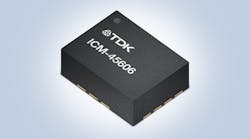Aging Lithium Batteries: A Neglected Safety Hazard
With millions of Lithium batteries in use in mobile devices, safety has become a very real issue. This is evidenced by incidents such as trucks carrying Lithium batteries catching fire, mobile phones (famously) catching fire, and most recently, the explosion of a New York Police Department body camera, almost certainly due to a battery malfunction. More devices, more backup batteries, and more discarded Lithium batteries mean more problems down the road without proper maintenance and disposal programs.
“What people and companies fail to realize is that aging Lithium batteries are highly volatile – even ticking time bombs in some cases. And most overlook this truly significant safety hazard,” said John Rodrigues, Vice President at Global Technology Systems, Inc. (GTS). “There are myriad reasons a battery can catch fire, or even explode. In the most recent event in Staten Island, the battery might have shorted out, been overcharged causing the battery to swell, or suffered an impact which caused a short-circuit condition.”
GTS says that to avoid hazards, battery safety and disposal guidelines should be implemented immediately and include:
- Track the purchase dates and ages of batteries and use color coding to distinguish purchase dates. This will help to determine how long a battery has been in service when the time comes to replace the batteries. Following this procedure also helps to ensure your batteries are always replaced before productivity is lost.
- Label each device with its own unique number.
- Label each battery charger and charging slot (if applicable) with the same number that corresponds with the associated device. Label the batteries with the same unique number as the corresponding device and charger.
- Replace batteries at the optimal time. Typically, batteries should be replaced every 18 months for users with average usage patterns (i.e. an 8-hour shift in a retail environment). Replace batteries every 12 months for users with moderate to high usage patterns (i.e. a 24/7 warehouse environment)
- When your batteries are no longer able to provide the appropriate charge, dispose of them properly. “Old” Lithium batteries become more volatile with age and are at high risk of catching fire. Proper disposal also better sustains the environment.





